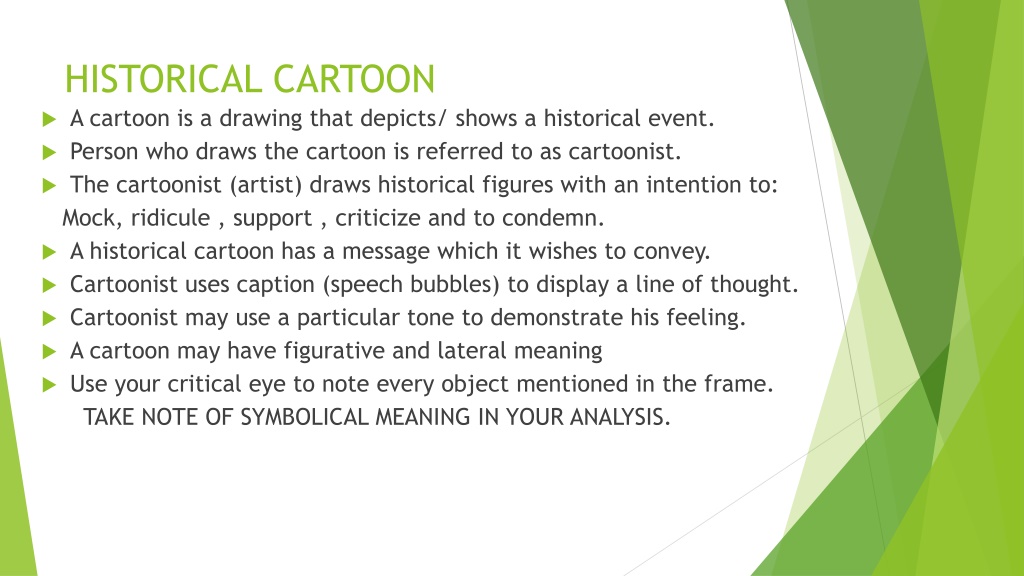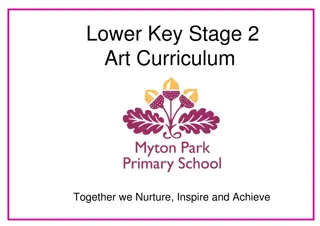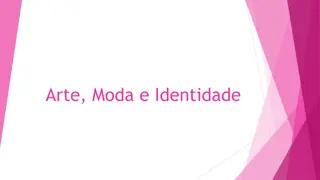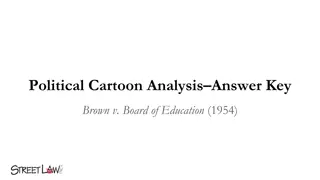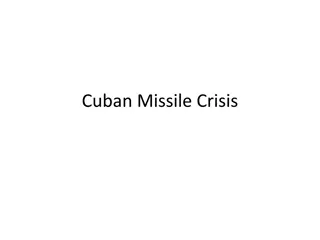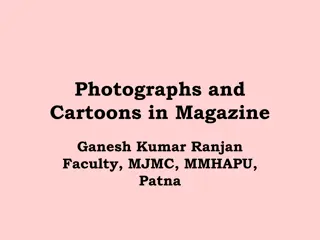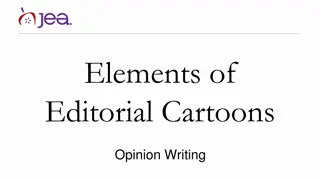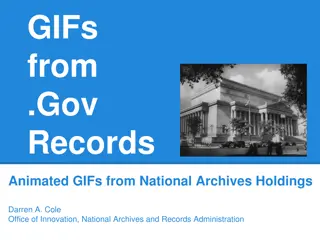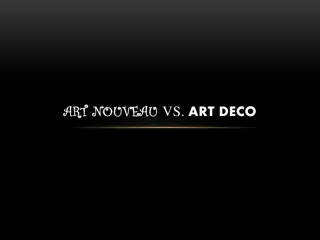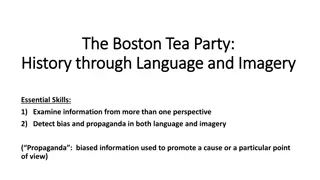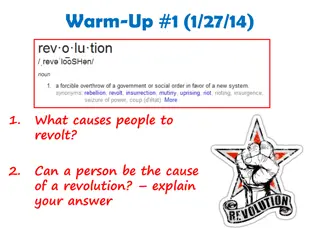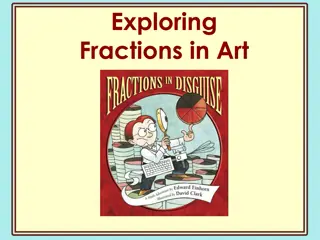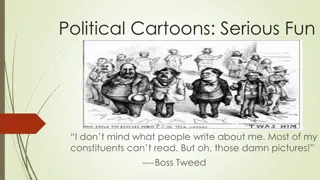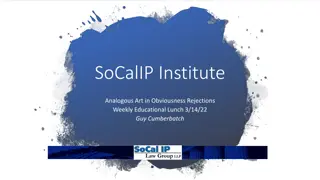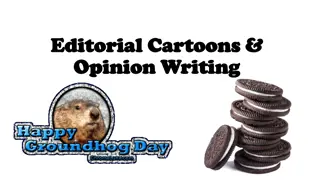Exploring the Art of Historical Cartoons
Delve into the world of historical cartoons and learn how cartoonists use satire, symbolism, and caricature to convey messages about significant events and figures. Understand the contextualization, intention, and symbolism behind these artworks through examples and analysis, revealing the hidden layers of meanings within each frame.
Download Presentation

Please find below an Image/Link to download the presentation.
The content on the website is provided AS IS for your information and personal use only. It may not be sold, licensed, or shared on other websites without obtaining consent from the author. Download presentation by click this link. If you encounter any issues during the download, it is possible that the publisher has removed the file from their server.
E N D
Presentation Transcript
HISTORICAL CARTOON A cartoon is a drawing that depicts/ shows a historical event. Person who draws the cartoon is referred to as cartoonist. The cartoonist (artist) draws historical figures with an intention to: Mock, ridicule , support , criticize and to condemn. A historical cartoon has a message which it wishes to convey. Cartoonist uses caption (speech bubbles) to display a line of thought. Cartoonist may use a particular tone to demonstrate his feeling. A cartoon may have figurative and lateral meaning Use your critical eye to note every object mentioned in the frame. TAKE NOTE OF SYMBOLICAL MEANING IN YOUR ANALYSIS.
Contextualization in Cartoon Who drew a cartoon? When was it drawn? Why was it drawn? Sense Intention Feeling Tone
Contextualization intention caption/ speech bubbles Symbolism caricature Evidence/atrocities Exaggeration Transportation
SIFT IN THE CARTOON SENSE /CASE: Attitude of the NP towards the work of TRC INTENTION /AIM: Conceal and to utterly destroy evidence for the commission. Weaken the work of the Commission. CAPTION/SPEECH BUBBLE: Mockery; making the work of TRC as a joke. SYMBOLISM/REPRESENTATION: Name of the organization. Caricature/Characteristics :Witches people hurting others and derive pleasure. Feeling: NP shown as being spiteful/ hurtful Tone: Language of condemnation
contextualization pun/ singers atrocities Songs Arrogance show/movie Union building
Use the elements above to teach cartoons below
